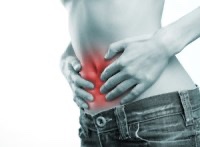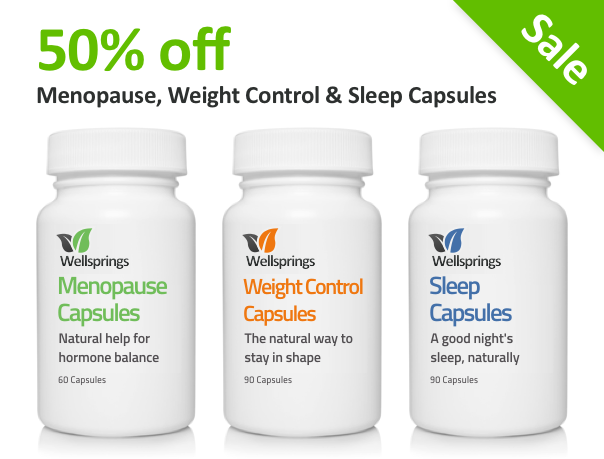9 Lifestyle Changes That May Help With Endometriosis
Endometriosis is generally agreed to be stimulated by oestrogen dominance and so progesterone can help rebalance that, and these tips can help too.

Endometriosis, a condition in which tissue resembling the lining of the uterus is found in the abdomen, is marked by severe pain, most often in the form of menstrual cramps.
Its exact cause is not yet known, but it does have a strong inflammatory component and, like the lining in the uterus, is influenced by oestrogen.
As endometrial hyperplasia and heavy bleeding are a condition of oestrogen dominance rebalancing with bioidentical progesterone can help.
This is a distressing condition so anything you can do to help yourself is welcome, so see if any of these ideas would benefit you.
1. Break a sweat
You may not be in the mood for a workout when you have pelvic pain. But if you run, bike, or do other types of brisk exercise, levels of oestrogen in your body may drop, so your periods are fewer or lighter.
Aerobic workouts also help your body make more endorphins, chemicals that make you less sensitive to pain. So when you feel up to it, make it a habit to move more.
2. Eat more greens
To feel better, eat more fruit, vegetables, and fish. Women who eat a plant-based diet are less likely to get endometriosis.
Also good: healthy fats like omega-3 fatty acids in salmon, tuna, and walnuts. Cut back on beef, pork, and other red meat. Their saturated fat can rev up your body’s disease-fighting response and trigger inflammation.
Saturated fat also raises oestrogen levels, which helps endometriosis grow.
3. Check your drinking
A glass of wine or beer once in a while probably won’t hurt. But women who drink a lot of alcohol may be more likely to get endometriosis. Drinking might also make your symptoms worse.
Again alcohol raises oestrogen levels, which could lead to more painful endometrial symptoms.
4. Keep yourself warm
Nestling a hot water bottle or heating pad to your stomach can soothe endometriosis pain. Keep it at a comfortable temperature, but not so hot so you could burn yourself.
A warm (but not hot) shower or bath is another way to ease the discomfort. A soak in the tub also can help you relax and de-stress.
5. Reduce your stress levels
Living with constant pain can stress you out. That can worsen your endometriosis symptoms, plus make you more sensitive to pain. So relax.
Try deep breathing, and inhale through your nose to fill your lungs with air. Meditate to calm your mind and body. A counsellor or therapist can teach you ways to curb your stress.
6. Get a massage
A gentle massage releases tension, soothes sore muscles, and helps you relax. It could also relieve endometriosis pain.
One study showed women with the condition who got regular massages hurt less when they had their periods. Just avoid a stomach massage, because it might make your symptoms worse.
7. Try acupuncture
It uses very fine needles to stimulate pressure points around your body. That raises your blood flow and releases natural painkilling chemicals in your body.
Research shows this traditional therapy can lessen endometriosis pain and help you better handle daily activities. Plus acupuncture is safe, with very few side effects.
8. Dietary help
A number of dietary measures can help relieve symptoms by reducing inflammation and addressing the activity of oestrogen in your system.
Start managing endometriosis nutritionally with an anti-inflammatory diet and include helpful herbs such as turmeric, ginger and sage.
Try the following additional dietary changes:
– Eliminate dairy foods and allow at least three weeks to observe any improvements.
– Eat only hormone-free meat to avoid any additional oestrogen exposure.
– Emphasise whole soy foods in your diet. Tofu, tempeh and soymilk are rich in plant oestrogens and seem to modulate the actions of other forms of oestrogen.
– Drink a cup or two of red raspberry leaf tea daily to help relieve cramps.
– Caffeine doesn’t work for everyone so it’s probably fine to enjoy coffee and tea in moderation. But if you find that caffeine worsens your symptoms, switch to decaf.
9. Get emotional support
Endometriosis affects both your body and mind. It can make you feel anxious or depressed, which could make your pain even worse.
A therapist may help you manage your condition, or join a support group for women with endometriosis, or connect with them online.
Reach out to friends and family when you don’t feel well.
Helpful information:
As endometrial hyperplasia and heavy bleeding are a condition of oestrogen dominance, rebalancing with progesterone will help.
However bear in mind that oestrogen dominance can cause both irregular cycles and retention of old blood as it has a normalising effect on the menstrual cycle.
This means that it can initially promote the shedding of this old blood which is desirable as old stored blood can increase the risk of endometrial cancer and endometriosis.
It is not a cause for concern normally, but we do suggest you see your doctor if the bleeding is heavier or more prolonged than usual.
You may find it helpful to read ‘Heal Endometriosis Naturally, without painkillers, drugs or surgery’ by Wendy K Laidlaw.
If oestrogen dominance is a factor, then this article can help:
https://anna.blog.wellsprings-health.com/the-diet-to-help-beat-oestrogen-dominance/

















